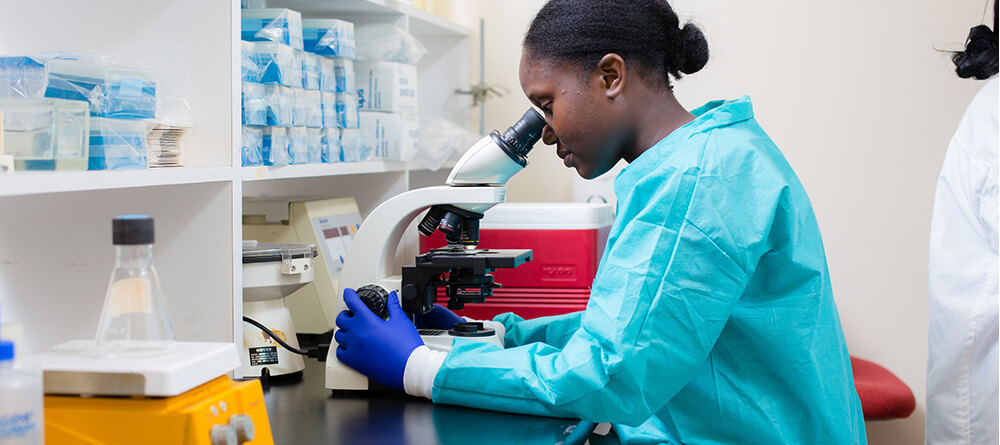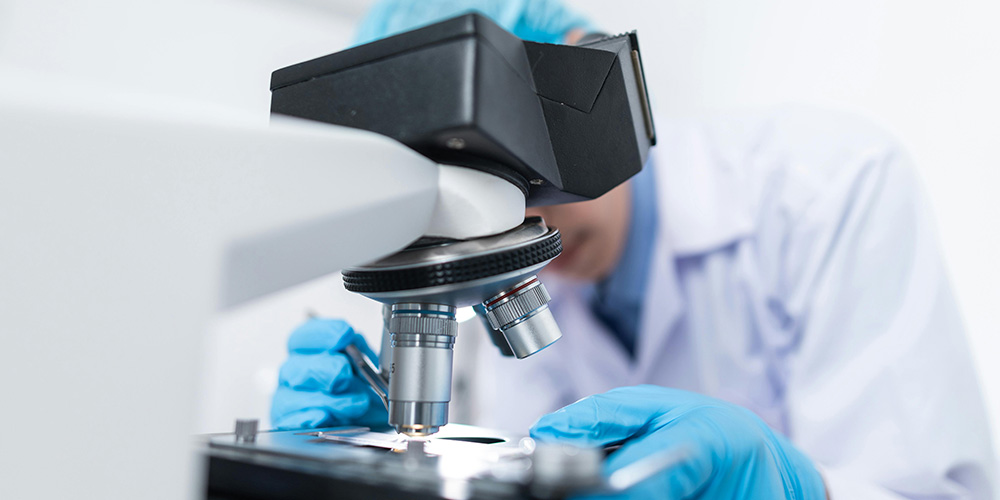Patients are accustomed to their primary care physicians communicating diagnoses. But there’s a lot of behind-the-scenes work that needs to come before symptoms and tests can be translated into a concrete diagnosis.
If you’re seeking a medical career that calls on you to be the problem solver, you might be a natural fit for pathology. You could take your natural sense of curiosity, combine it with your fervor for science, and play a critical role in helping provide patients with answers they’re seeking.
But what does a pathologist do exactly? And how can you become one? Read on to learn more about this unique medical specialty.
What is pathology?
Pathology is vaguely defined as the study of disease. But Dr. Shivayogi Bhusnurmath, dean of academic affairs and co-chair of the Department of Pathology at St. George’s University (SGU) School of Medicine , offers a bit more clarity.
“Pathology is the basis of all clinical medicine.”
“Pathology is the basis of all clinical medicine,” he says, explaining that pathologists are tasked with determining not only what a disease is, but why that disease occurred, how the tissues may have been damaged, and what functional changes took place. Clinical diagnosis alone is the physician’s best, most reasonable guess. Pathology doctors help solidify that into a definitive diagnosis.
What does a pathologist do?
Pathologists are sometimes called “the doctor’s doctor.” That’s because they’re the ones who help a patient’s physician make or confirm a diagnosis by studying tissue and fluid samples. Pathologists can even help identify an appropriate treatment plan based on their knowledge of what the patient is likely to experience in the coming days and weeks.

“They’re experts in predicting—if a cell or structure is altered in a certain way, the patient will have these symptoms,” Dr. Bhusnurmath explains.
On any given day, a pathology doctor may investigate health issues ranging from cancer to blood disorders like anemia. Dr. Bhusnurmath also highlights the following as common pathologist duties:
- Conduct blood investigations to look for bleeding disorders as well as abnormalities in blood chemistry and cells.
- Study pap smears to detect cervical cancer or pre-cancer. They can also work up slides to identify whether there are any changes related to human papillomavirus (HPV)
- Perform fine needle aspirations on lymph nodes, the thyroid, etc. to look for malignancy.
- Run blood sugar tests to help diabetic patients determine the proper medication dosage.
- Examine biopsies to diagnose cancer or other conditions.
- Perform autopsies to determine things like the underlying disease process and cause of death.
What are some pathology subspecialties?
There are two primary types of pathologists: clinical pathologists and anatomic pathologists. The former focus on analyzing laboratory results while the latter are more concerned with examining structural changes in tissue samples. A physician can also choose to become board-certified pathologists in both branches.
There are also numerous subspecialties pathologists can pursue through fellowship training and the corresponding certification. These include:
- Blood banking and transfusion medicine
- Chemical pathology
- Clinical informatics
- Cytopathology
- Dermatopathology
- Forensic pathology
- Hematopathology
- Medical microbiology pathology
- Molecular genetic pathology
- Neuropathology
- Pediatric pathology
How do you become a pathologist?
The road to a career in pathology starts out the same as it does for any other medical field. You first need to attend a four-year medical school to build a solid educational foundation. You’ll devote the first half of your education to classroom instruction and lab work.
The final two years will be spent completing clinical rotations to get more familiar working with patients. And as with other medical specialties, you’ll begin the United States Medical Licensing Examination (USMLE) series during medical school. You won’t take the final USMLE test until residency, where you’ll also obtain board certification.
Dr. Bhusnurmath notes that it’s particularly important for students interested in pathology to start getting involved early in their education. SGU, for example, provides opportunities for students to participate in a pathology observership—a chance to become more familiar with interesting specimens and cases in the pathology department’s diagnostic lab during their first two years.
There are also other ways students can hone their pathology expertise. “During their fourth year of medical school, students can opt for a one-month elective back in Grenada,” Dr. Bhusnurmath explains. “They’ll see a lot of pathology slides, write about them, and also get involved in teaching pathology to students in small groups.”
This kind of continued involvement in the pathology field while in medical school can improve your chances of securing a postgraduate training position at a four-year pathology program, which have become very competitive.
What makes a good pathologist?
Interestingly, researchers have actually studied the specific traits that are common among high-quality pathologists. A survey of more than 600 practicing pathologists who were involved in hiring physicians just starting out in the field identified which qualities are most desirable.
Aside from the necessary technical proficiencies, some of the competencies identified as critical are as follows:
- Communication skills
- Emotional stability
- Integrity
- Professionalism
- Work ethic
- Ability to work well with a team
But perhaps most important is an inherent sense of curiosity. Dr. Bhusnurmath says this is a large part of what motivated his decision to pursue pathology. “I always wanted to know the confirmed diagnosis. I wasn’t satisfied with, ‘It could be this or that.’ I was looking for definitive answers.”
Picture yourself as a pathologist
Pathology is undeniably different than most other medical fields. But now that you know more about what a pathologist does, you may be starting to envision yourself thriving in this complex role.
Before you can think about becoming a pathology doctor, however, you’ll need to gain acceptance to medical school. Learn more about the road ahead by reading our article “Understanding the Medical School Application Process.”
*This article was originally published in 2019. It has since been updated to include information relevant to 2022.

